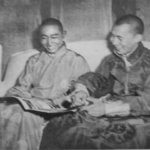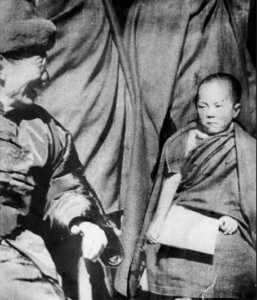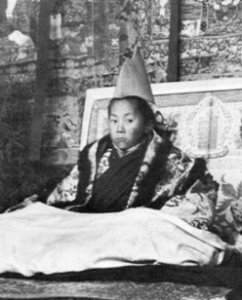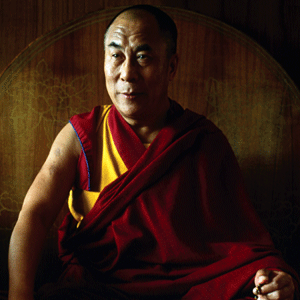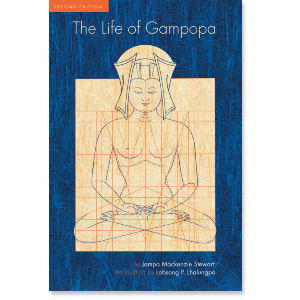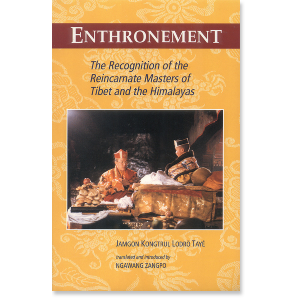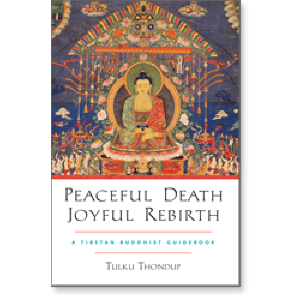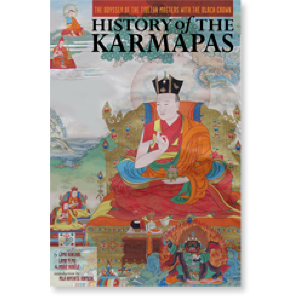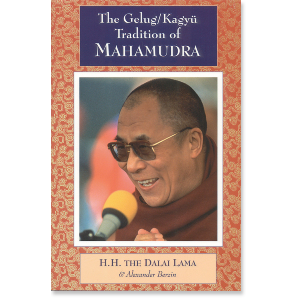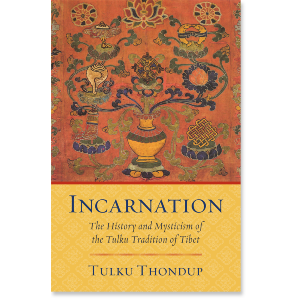| The following article is from the Spring, 1990 issue of the Snow Lion Newsletter and is for historical reference only. You can see this in context of the original newsletter here. |
The Tibetan Tradition of Recognizing Reincarnate Lamas
Although the original meaning of the term Nirmanakaya (Tib. sprul-sku, pronounced tulku) refers to the Emanation Body of a Buddha, in general usage it also applies to Bodhisattvas, Aryas, and certain ordinary beings who have achieved the spiritual power to reincarnate according to their own will, with the motivation of helping sentient beings. A detailed account of the nature and variety of reincarnation of the noble beings would be too extensive and intricate to be given here. However, two basic factors which make the reincarnation of noble beings different from the rebirth of ordinary beings are their freedom to reincarnate at will and their altruistic motivation to help others.
Two basic factors which make the reincarnation of noble beings different from the rebirth of ordinary beings are their freedom to reincarnate at will and their altruistic motivation to help others.
In Mahayana tradition, great Bodhisattvas are bound by their vows not to rest in the peaceful state of liberation, but to reappear repeatedly in the world to help sentient beings. However, the time and place of their reappearance is mainly determined by the faith and karma of their disciples. It is within this context that the tradition of recognizing the reincarnations of high lamas came into being in Tibet.
When a high lama shows signs of passing away, his disciples request him to reincarnate and continue his noble work of teaching the Doctrine and liberating ignorant beings. If the lama sees benefit in his being reborn in the same area, he accepts the request and reincarnates accordingly. Subsequently, a child is sought and the candidate who passes the series of traditional tests is formally recognized as the tulku, or reincarnation of the deceased lama.
Only those candidates who survive this preliminary assessment continue to the more detailed and intensive tests.
In most cases, the process of recognizing a tulku is begun by consulting a high lama and/or oracle for indications as to where to look. If they see that the tulku has already reincarnated, they may indicate the place, age of the child, and sometimes his home or family. The blossoming of trees, earth tremors and so forth, and omens or significant dreams experienced by the parents must be confirmed. Only those candidates who survive this preliminary assessment continue to the more detailed and intensive tests. As the ultimate aim is to recognize the correct reincarnation, great care is taken throughout to ensure that the real reincarnate is among the remaining candidates. This is confirmed primarily through divinations and directives from reliable lamas and oracles.
One might wonder why such high lamas or oracles do not point out the correct reincarnation directly, rather than engaging in this complicated procedure. This does occasionally happen, but the systematic confirmation of tulkus through a series of tests has always been both more reliable and more acceptable to the community of disciples.
In addition to these external tests, more penetrating inner and secret tests employing meditative insight are conducted by capable and experienced masters.
The test usually conducted on the final candidates includes checking whether the child remembers anything related to the previous lama, whether the child can recognize some possessions the previous lama has regularly used, whether he can recognize close disciples and attendants of the previous lama, as well as carefully studying the child's personality. In addition to these external tests, more penetrating inner and secret tests employing meditative insight are conducted by capable and experienced masters. In fact, the external tests are regarded as confirming and secondary to the inner and secret tests. The final decision, based on all these findings, is made by an authoritative lama.
Most reincarnations of high lamas clearly remember and speak about their past lives, correctly recognize persons and objects closely related to their previous incarnations, and clearly reflect, through natural behavior, their deep familiarity with the Buddhist teachings. For instance, the present Dalai Lama when four years old directly recognized two members of the search party, and correctly distinguished objects that had belonged to the Thirteenth Dalai Lama.
Most reincarnations of high lamas clearly remember and speak about their past lives... There are also extraordinary cases, from amongst the highest ranking lamas, in which a lama leaves certain clues before his death about his next incarnation.
There are also extraordinary cases, from amongst the highest ranking lamas, in which a lama leaves certain clues before his death about his next incarnation. The great Karmapas, for instance, always leave a sealed letter about the place and person of their next incarnation. Another historical example is the direct indication by the Sixth Dalai Lama, in one of his casual verses, about his rebirth in Lithang.
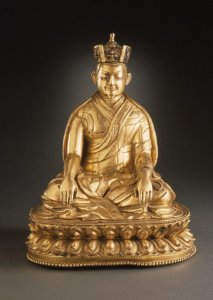
Karma Pakshi (1206-1283)
The tradition of formally recognizing reincarnate lamas in Tibet began with the recognition of Karma Pakshi (1206-1283), the second Karmapa, as the reincarnation of Karmapa Dusum Khyenpa (1110-1193), a close disciple of Gampopa (1079-1153). Subsequently, the tradition spread widely throughout Tibet in all the major Buddhist schools. In Gelug, the youngest and largest school of Tibetan Buddhism, the tradition began with the second Dalai Lama, Gedun Gyatso (1476-1542), who was recognized as the reincarnation of Gedun Drub (1391-1474), a close disciple of the founder of the Gelug school, the great Tsongkhapa (1357-1419).
The prevailing tradition of recognizing the reincarnations of ordinary learned and experienced lamas, such as certain abbots, is a later development. The number of reincarnate lamas in Tibet in 1959 was estimated to be in the thousands.
The recent official Chinese announcement of their intention to recognize the next Panchen Lama in accordance with the Chinese constitution and within China shocked and surprised Tibetans and Buddhists the world over. Does this mean the Chinese constitution now permits the religious theory of reincarnation? Or, do the Chinese authorities simply want to appoint the next Panchen Lama according to a new secular rule?
The outside world should see the Chinese attitude as the climax of a calculated, but deluded move to secularize a centuries-old religious tradition, under the pretext of a widely advertised policy of greater religious freedom in Tibet. In response to a moving appeal from Tashi Lhunpo Monastery, the traditional seat of the Panchen Lama in Tibet, His Holiness the Dalai Lama assured the monks of his complete support, despite whatever external obstacles might arise, in the task of recognizing the next Panchen Lama.

